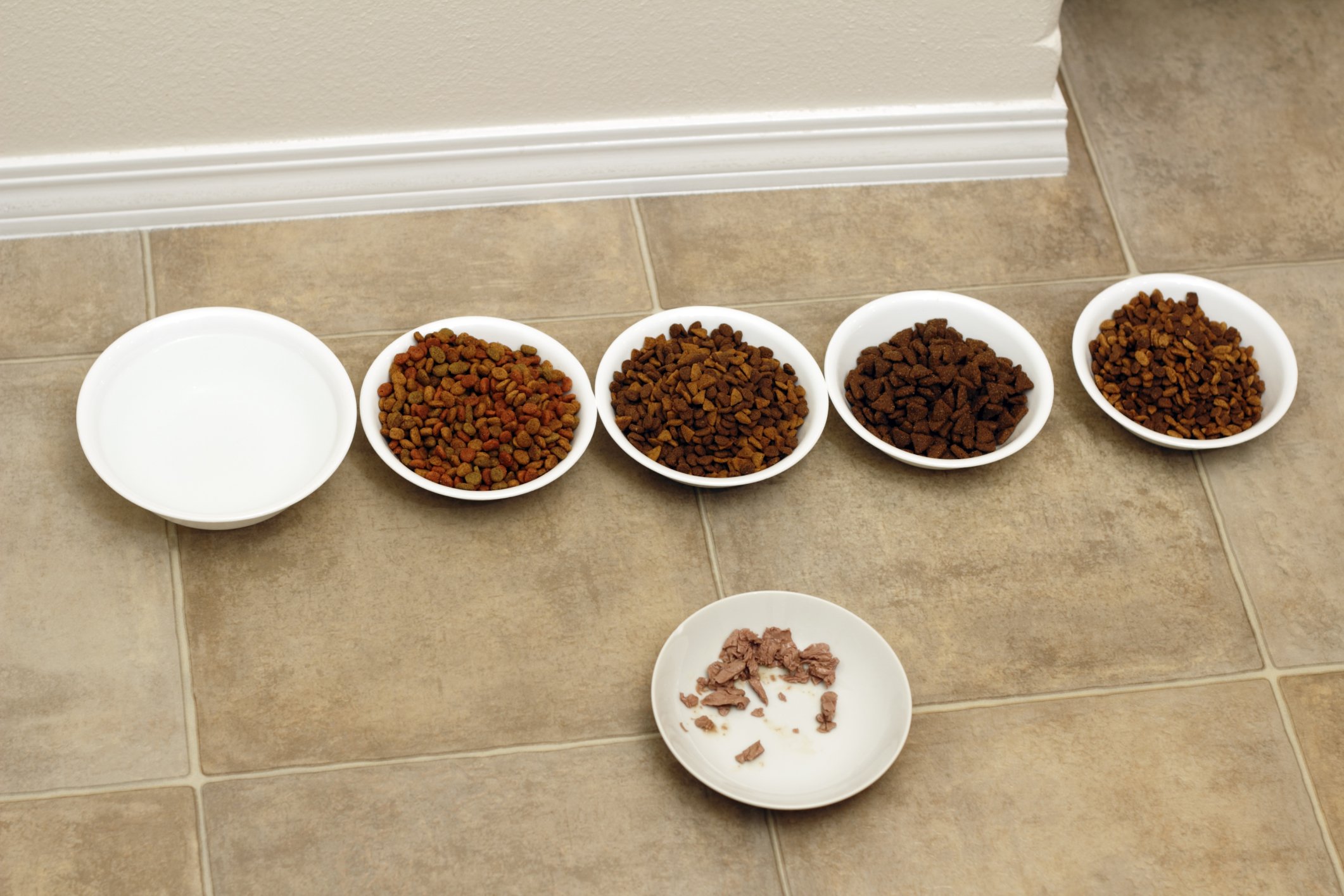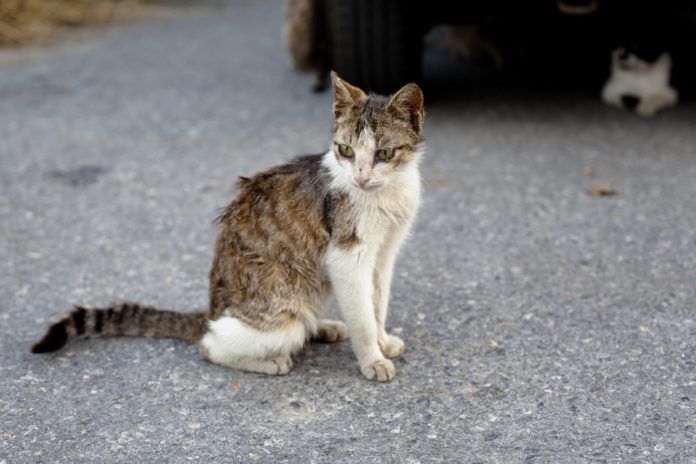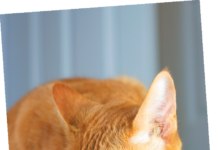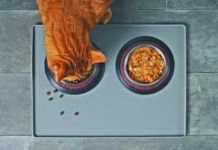As a feline practitioner, I frequently hear the word “finicky” to describe the state of a cat’s appetite. The word was popularized in the 1970s by Morris, who was marketed as “the world’s most finicky cat” — deigning to eat 9Lives only. And the word “finicky” has been firmly rooted in our vernacular ever since.
Cats are indeed finicky — but a distinction must be made between choosy cats as opposed to cats that are losing (or have entirely lost) their appetite. Poor or decreasing appetite is one of the most frequent motivations for a cat owner to seek veterinary advice.
The medical term for a lack of appetite for food is anorexia, and we usually qualify it further as being ‘partial anorexia’ (still eating, but much less) versus ‘complete anorexia’ (not eating anything at all). True anorexia must be distinguished from pseudo-anorexia, in which the appetite is normal, but there is a decreased intake of food due to secondary factors, such as a painful tooth, fractured jaw, tongue injury or impaired sense of smell due to an upper respiratory infection.
Anorexia is a very common manifestation of disease. Cats that are eating ravenously present less of a diagnostic dilemma, as there is a shorter list of illnesses that result in increased appetite (diabetes, hyperthyroidism, pancreatic insufficiency and a few others). On the other hand, the list of illnesses that result in decreased appetite is enormous, presenting a far greater diagnostic challenge. (Therefore, it’s important to note that addressing the specific illnesses that could lead to anorexia is beyond the scope of this article.)
Instead, we’ll focus on the harm that may result from anorexia, how to know when inadequate food intake reaches a point where it might impinge on the patient’s nutritional status to the extent that it might jeopardize the outcome, and most importantly, what remedies are available.
Effects of prolonged poor nutrition in cats
As carnivores, cats have a higher protein and amino acid requirement than most other animals. When cats become anorexic, they rapidly become protein-malnourished. Failure to provide adequate nutrition may ultimately be more detrimental than the primary disease that is causing the anorexia.

THINKSTOCK
When cats have been anorexic for longer than three to five days, bodily fats are broken down into triglyerides, which the body intends to use for energy. Sometimes these good intentions go awry, and cats may abnormally accumulate triglycerides within their liver cells. This excessive accumulation of fat in the liver is called hepatic lipidosis, and it is a serious liver disorder.
The ultimate goal of the veterinarian is to diagnose and treat the cat’s underlying condition. However, symptomatic treatment of anorexia during the diagnostic phase is equally important if a satisfactory outcome is to be achieved.
How appetite stimulation helps
It is always preferable to induce voluntary eating rather than to force cats to eat against their will. The use of appetite stimulants can play a valuable role in this regard. It is very important for veterinarians and owners to acknowledge that appetite stimulation should not be used as a substitute for obtaining an accurate diagnosis and then treating the underlying condition. Nor should appetite stimulants be used in very ill patients, as they are often ineffective. The most common scenarios for considering appetite stimulants are:
- Short term treatment while trying to make a diagnosis;
- Persistent, moderate anorexia where no cause can be discovered;
- Persistent, moderate anorexia where a cause is found, but treatment doesn’t fully restore the cat’s appetite;
- When behavioral issues or environmental factors are involved, and manipulating the diet has been unsuccessful;
- When an aversion to food is preventing the cat from eating despite the underlying cause having been treated and resolved;
- To support nutrition in cats that are chronically ill (for example, those with chronic kidney disease or cancer) and are being given palliative treatment.
Drugs to make cats hungry
A variety of drugs have been used in cats in an attempt to get them to eat. For years, our best option was the drug cyproheptadine. However, successful use of the drug mirtazapine was first reported in 2006, and two subsequent studies reported a significant increase in food consumed after mirtazapine was given to healthy cats. As a result, mirtazapine has now replaced cyproheptadine as the most popular drug option.
Pharmacologically, mirtazapine is classified as a serotonin receptor antagonist. Different articles recommend different dosing schedules. Some veterinarians administer a small amount every 24 hours. Cats with kidney disease have reduced ability to metabolize the drug, so the drug should be given every 48 hours to these animals. (And some veterinarians have success with dosing every third day.)
Adverse effects are uncommon, but they may include muscle twitching, hyperactivity, increased vocalization and acting “jittery” in general. These side effects are less likely at lower doses.
The previously-popular cyproheptadine is an antihistamine that antagonizes serotonin directly. It may take a few days to reach effective blood levels, and it needs to be administered more frequently (every eight hours) as compared to mirtazapine. The drug is metabolized by the liver and kidneys, so cats with liver disease or kidney disease need to have their dosage adjusted downward.
Other drugs to help stimulate a cat’s appetite include anabolic steroids, such as nandrolone decanoate and stanozolol. Unfortunately, adverse effects are common, and can be quite serious. For this reason, they are no longer recommended for appetite stimulation.
The benzodiazepines are a class of drug that stimulates appetite in cats, with diazepam (Valium) being the best known in this group. It works dramatically when given intravenously, but less consistently when given orally.
The effects are short-lived, however, and the amount of food eaten usually falls short of the cat’s nutritional requirements. Side effects include sedation and uncoordinated gait. Multiple reports of a serious, often fatal adverse reaction resulting in severe liver damage have made the use of the benzodiazepines controversial, especially since better alternatives now exist.
The glucocorticoids are a class of drugs commonly prescribed for numerous disorders. Increased appetite is a well-documented side effect, although dogs experience more hunger from these drugs as compared to cats. The appetite-stimulating effect tends to last only a few weeks, and there are many potential side effects (diabetes, congestive heart failure, immunosuppression), making these drugs a poor choice for long-term use as appetite stimulants.
Help for cats with IBD
In my feline practice, we frequently diagnose cats with inflammatory bowel disease (IBD). Poor appetite is a common clinical sign of IBD. Prednisolone, a glucocorticoid, is the drug of choice for treatment. When initially administered at relatively high doses for IBD, the increase in appetite is likely due to the appetite stimulating effect of the drug. As the dosage is gradually tapered to every other day therapy, the continued good appetite is likely due to resolution of the IBD.
Megestrol acetate is a synthetic progestin hormone. Occasionally it will stimulate a cat’s appetite, but risk of serious side effects precludes its use for this purpose.
Diagnosis is key
Most cats presenting with anorexia have an underlying systemic disease. Pharmacological enhancement of appetite should never take the place of a thorough diagnostic work-up to determine the cause of the anorexia. Appetite stimulants, if used properly, certainly can help revive a cat’s waning appetite.
However, if the cat doesn’t respond to appetite stimulants, assisted feeding through the use of feeding tubes, or even intravenous feeding, may be warranted.





Thank you for this article. My cat has an upper respiratory problem and one of the treatments was mirataz. It has really helped with his eating since he can’t smell the food.
He reached his nineteenth birthday so know he is working on to the twenties. He still has the respitory problem which we are working on. He is still able to jump on my lap and reach his paw to touch my face so I’m not giving up on him!!
Great comprehensive article. I found this very helpful. Just a word about feeding tubes –if you have ever had one, you might reconsider. For me, it was a very miserable experience, and the bolus feedings were like torture. You feel extremely hungry, but a bolus feeding, I suppose to save time for staff, pushes a large amount of liquid nutrition to your stomach all at once. It’s very uncomfortable, to the point of being painful, then you feel horribly nauseous. It’s like cramming in two Thanksgiving meals all in a few minutes. Since I was able to speak, I was able to complain vehemently to hospital staff, and we switched to a slow IV drip. A cat doesn’t have this option. I would be very reluctant to put a conscious cat through such an experience.
It’s not the same for cats. Vets are very much aware of the danger of refeeding a cat too much/too quickly.
Our 16-year-old cat was totally anorexic. No food at all. A million tests later — no underlying disease found. Her weight fell to under 6 pounds during all that testing. Two different appetite stimulants had no effect. We had the vet put in a feeding tube, an e-tube to be specific, which is placed through an incision in the neck and the tube goes down the esophagus and empties close to the stomach.
We followed the vet’s detailed feeding schedule. For the first few days it was only a teaspoon of liquified food every three hours around the clock, with some additional amounts of water and liquid vitamins through the tube. The amount of food was increased gradually over the course of a month until she was having five larger daily meals via the tube, with calories calculated to increase her weight. We ended the tube feeding at six weeks and tried an appetite stimulant again (Mirataz). It worked. She weighs 9 pounds now and is back to her old self, full of attitude and affection.
Thanks for sharing that hopeful story. I am handfeeding my 20 year old, who suddenly developed anorexia this week after a gastric upheaval out of the blue. Has never had problems eating before. I suspect it could have been a can of a new food brand I tried last week. Big mistake to change foods, esp. a chunkier texture at this age. Two vets have weighed in, hoping the drugs we have plus very gentle diet will get us back to normal soon. So far it is one step forward and one back. Working on this 24/7 and hoping for the best! It can get better!!
Thanks for sharing. What is most frustrating if anxiety is contributing to the anorexia, (such as my 2 year old cat is experiencing), is that most of the medications suggested by vets (e.g., prozac, clomicalm, etc.) have decreased appetite as one of the side effects so I can’t treat the anorexia/anxiety as the solution increases the anorexia. I also cannot pair these anti anxiety drugs with mirtazapine as there is a risk of serotonin syndrome. This is the most frustrating situation I’ve ever experienced with any cat. I am currently trying an herbal calming tincture twice daiy and microdosing mirtazapine to keep her eating. She is more confident lately but her appetite is not what I’ve seen previously and she seems to need the mirtazapine to keep her self feeding.